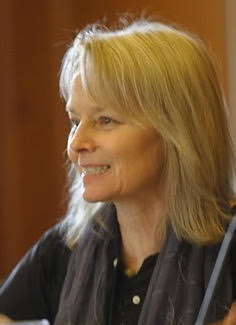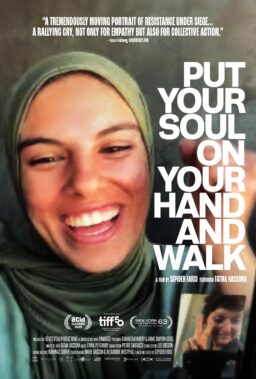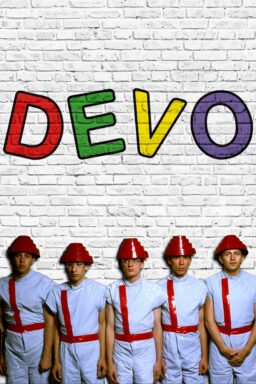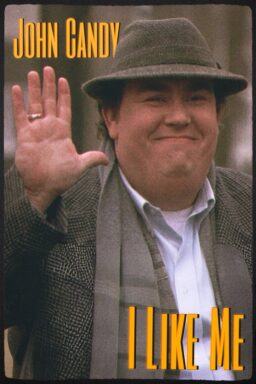 Call it a bloodbath. Not literally, of course, but it sure felt like one.
Call it a bloodbath. Not literally, of course, but it sure felt like one.
It was a Friday afternoon in late spring 1993 at The American Film Institute. The Class of 1992, which had pretty much killed itself making short films (“cycle projects”) since starting the program in September, was waiting for a list. Dreading it, too. Because everybody’d known all year that of 168 “Fellows,” as AFI calls them — only 40 (or just 8 across 5 disciplines – directing, producing, cinematography, editing, production design) would be invited back, making that coveted Second Year cut for the opportunity to produce a second year film.
A top secret selection committee debated late into the day. Even I, then Special Projects Coordinator and right hand to the Dean of Studies, didn’t know who was meeting. There was tension everywhere, clinging like the humidity of a Midwestern summer, as the committee decided, and the Fellows waited.
Staff were told to head home right on time – at 5 PM and not after. Decisions were final. It was understood how upsetting this process was (and likely had been as long as the policy had been in place). But this year was rather different. There were so many talented people: many more than that attenuated list could accommodate. And everybody – faculty, staff and all the Fellows – knew it.
I was supposed to be gone but couldn’t abide it. In the six months I’d worked among and gotten to know the Fellows, I was fond of so many. And friends with some. It felt like somebody from staff should stay and show the kinder face of AFI on this tough day. So I rather nervously sat down at the front desk in the Dean’s office with the door open.
The list went up on a hallway bulletin board late, after 5:30. The waiting Fellows appeared alone, or in groups of varying sizes, to scan for their names and the names of others. I could see and hear them. Some fortunate ones walked away smiling. There were many gasps. Drawn faces. At least one noisy, angry outburst.

The larger world knows the American Film Institute for its “100 Best Films,” and the annual, nationally broadcast Life Achievement Awards, honoring filmmakers from Orson Welles to Tom Hanks and Steven Spielberg, Billy Wilder, Lillian Gish and Sidney Poitier to Meryl Streep. Founded in 1967 as an offshoot of the National Endowment for the Arts, AFI is an independent non-profit organization, created “to enrich and nurture the art of film.”
Film professionals, film lovers and film student hopefuls know it as a Conservatory, a filmmakers’ training program whose first class included Terrence Malick, Paul Schrader and David Lynch. Impossible to list them all in the years since but here are a few more: Ed Zwick and Marshall Herskovitz, who met at AFI and who, as writers/directors/producers, have since had one of Hollywood’s most fruitful, enduring partnerships. (“Love and Other Drugs,” “Thirtysomething,” “Glory,” “Legends Of The Fall,” are just a smattering of their credits.) Robert Richardson, the cinematographer whose work with Oliver Stone, Martin Scorsese, Quentin Tarantino and others has garnered 6 Academy Award nominations and earned 2. Director Carl Franklin (including “Devil In A Blue Dress” and “One False Move,” which Roger Ebert called the best film of that year). English writer/director Andrea Arnold, winner of a 2004 Oscar for Best Live Action Short, has now made two highly-regarded features, including “Fish Tank,” which won the 2010 jury prize at Cannes, and a BAFTA (the British Oscar).
I still recall the first AFI alum I met when, as a public radio producer in Denver, I interviewed Sally Barrett-Page, an early directing program grad, screening her short film around the country. It sounds a little silly now but I admit to some awe – the American Film Institute.
Years later I was sitting there at the very place as decisions were being made which could determine these Fellows’ futures. A few entered my office that afternoon, wondering whether they could appeal, or just needing a few understanding words.
Later that night I had dinner with one Fellow who’d become another friend. We headed a couple of miles south of AFI to El Cid on Sunset — built around 1900 by the great silent director D. W. Griffith as a theatre to screen his films (the controversial “The Birth of a Nation” was the first) and house his offices. It was an appropriate spot, as AFI cares deeply that its Fellows know the work of Griffith, Chaplin, Mack Sennett (whose old Keystone Studios building is just blocks away) — all the early pioneers in this strange admixture of art and commerce. Later, with Griffith gone, El Cid became a hangout for many famous mid-century film folks. And by the 1990s, long since converted to “an authentic replica of a 16th century Spanish tavern,” the tapas restaurant cum nightly live Flamenco show had transformed into a cool Silver Lake joint.

My miserable friend, who hadn’t been selected, sat stunned in the shadowy space as I tried to offer perspective and condolences without crossing into confidential areas. It was awkward. Painful. What a relief, as we picked at our dinners, to have the dancers and guitarists bound on stage to fill the room with music, castanets and stomping feet.
Many Fellows hurt that night, and these feelings lasted some time. Eventually the policy (in large part based on the limited production space at the school) was discarded; within a couple of years everyone who wished to return for Second Year could do so, joining the groups of Screenwriting Fellows, the sixth of AFI’s disciplines which, since they didn’t generally require production and editing facilities, had always been able to come back.
But what about this class of ’92, and why write about it? Success, in a word. Achievement. So many of this small group, some of whom were not on that list, have gotten there, and it’s a “there” that’s hellacious to reach.
Darren Aronofsky (director, “Black Swan“), Matthew Libatique (cinematographer, “Black Swan”) and Scott Silver (screenwriter, “The Fighter“), all received multiple nominations this year, including for Sunday’s Academy Awards.
Toss in some others: Mark S. Waters has now directed seven features, including “Freaky Friday” and “Mean Girls,” with another big one soon — “Mr. Popper's Penguins,” starring Jim Carrey. Todd Field, while continuing an acting career (Kubrick’s “Eyes Wide Shut,” among them) is the director/co-writer on two superb, Cassavetes-like films, “In the Bedroom” (nominated for many awards, including five Oscar nominations) and “Little Children.” Both were shot by Antonio Calvache, whose talent for cinematography was unmistakable from AFI’s first cycle project.
And Doug Ellin has made it happen in cable television, creating, executive producing, and serving as head writer on HBO’s madly successful “Entourage.” Nominated for 25 Emmys, winner last year of a top drawer Peabody Award for Excellence in Television, and syndicated internationally, the show wraps this summer after 8 seasons, with Ellin moving on to develop a new series for HBO.
I’m no oddsmaker but that’s an unusual percentage out of a small cohort.
Thinking about this, about them, puts me back in that time, intrigued to explore what they experienced and why (if there’s any explaining it) they’re where they are today.
Before I go further, a disclaimer: This piece is by no means “objective” and, in the interests of length (this being an essay, not a book), it most certainly skims along the surfaces of those included, while leaving other deserving people out. I regret that this is necessary. There are many stories (one or two quite amazing) of those days, still to be told — perhaps another day, in somebody’s memoir or even a screenplay.
This is my story of the Class of 1992.
That November, I got a call asking if I might fill in for awhile as an administrative assistant in the Dean’s Office at AFI. “Yes” meant returning for a second stint: I’d worked a year at AFI in 1990, but not at the Conservatory. My previous job in the Independent Filmmakers grants program had evolved into handling distribution, reorganizing and making sense of contracts for Second Year films of earlier eras. I’d left to write a screenplay based on a book I’d optioned.
Calling me back was Maggie Biggar, the very first person I met in Los Angeles, to which I’d decamped from Colorado after working in Dallas as Oliver Stone’s technical advisor on “Talk Radio.” Maggie and I had chosen apartments in the same Los Feliz triplex; on the steamy day I unloaded my U-Haul, she brought out a large glass of lemonade and we became friends. By then a high level assistant to AFI’s Assistant Director (and now VP of Fortis Films, Sandra Bullock‘s company), she’d gotten her first AFI job through me. Now she was returning the favor.
AFI’s enchanting campus is set on eight wooded acres at the edge of Griffith Park, the largest city park in the United States. Despite being just above Los Angeles in all its urban glory, AFI, set apart as it is from all the city craziness, offers haven (raccoons, skunks, even deer are among its regular visitors) and a fine place to experiment and learn.

With the school year reaching its midpoint, a lot had already happened when I returned. Dean of Studies Ron Silverman made my adjustment easier. We were quickly in sync, focused on the Fellows and their faculty, committed to crafting the best program we could manage. Soon he started offering me challenging assignments and convinced me to stick around.
At the Conservatory, Silverman was into his third career, with earlier ones writing for “Variety,” and then as a movie producer, including “Brubaker,” the Robert Redford film which introduced Morgan Freeman (which the esteemed actor calls his “first break”). This rich experience gave Silverman an excellent sense of which film professionals, including “Brubaker” director Stuart Rosenberg, would make solid teachers.
The first Fellow I remember encountering was a soft-spoken Spaniard still getting comfortable with English. Antonio Calvache and I became (and remain) friends. Recently I asked how he got to AFI. It turns out that, studying in Madrid, one teacher was an AFI alum who spoke of it highly. “The idea of going to AFI wouldn’t cross my mind then, but that name remained with me: The American Film Institute (gosh, it sounded so good), and it became the ideal of what a great film school should be…” A few years on, as he committed himself to cinematography (with Nestor Almendros’ A Man with a Camera an inspiration), he applied to only one school. Quickly accepted, he was transported rather suddenly to Los Angeles.
Calvache again: “Of course, with such high expectations, disappointment was ready to be served. I remember the depression of the first days, commiserating with (Screenwriting Fellow) David Trueba, my fellow countryman, both of us sitting at the front steps of the main building during lunch break, imagining getting the tuition money back, to use making the trip of our lifetimes instead. But I soon realized that I couldn’t wait for AFI to provide me with everything. The sacrifices I had made to be there gave me the force to persevere. I decided to focus 100% on my work and the work of my classmates. Eventually I found my way, and my year at AFI ended up becoming a true journey of a lifetime.”
“Cinematography Fellow” Antonio Calvache, now a distinguished member of the American Society of Cinematographers (ASC), reminds me of Vittorio Storaro, another fine artist who, as Storaro puts it, “paints with light.” To see what I mean, here’s the trailer for “Little Children,” written and directed by Todd Field:
“Directing Fellow” Doug Ellin has a quite different story. He was a standup comedian with a day job at New Line Cinema – in the proverbial mailroom. New Line’s President Mike De Luca, upon seeing Ellin’s act, offered to finance a short film. “The short I made didn’t require much directing. I was pretty sure I didn’t even really understand what a director did, but the producer was confident I could do it,” Ellin said. It attracted attention, and he found himself pitching it to an interested producer. “The meeting was a disaster. I had no idea what I was supposed to say. Afterwards, De Luca told me, roughly, ‘You have raw talent. But you need to go to film school and hone it.’ So I took his advice and went to AFI.”
“Cinematography Fellow” Matthew (“Matty”) Libatique, with a luxury of black hair down his back, could not be missed in those days. He had an intensity which was balanced out by a quick smile. Up this weekend for an Academy Award in Cinematography for the extraordinary “Black Swan” (and sure to win one in the near future, if not this time), his success looks “easy” from the outside.
I asked what he’d gotten from AFI: “(Its) all-consuming nature allowed me to concentrate on cinematography for two years without interruption…The late great John Alonzo was an absolute highlight. He had the ability to switch from technical to philosophical ideas. He and Stuart Rosenberg created a great debate between the Cinematography and Directing Fellows…”

That debate involved whether “the camera was the domain of the cinematographer or meant to be a shared responsibility with the director.” Libatique and Directing Fellow Darren Aronofsky concluded it was the latter. The influences of Alonzo and Rosenberg, says Libatique, “are a part of why Darren and I worked the way we did early on.”
Ron Silverman would undoubtedly make note here of the “collaboration” which Libatique has just mentioned. It’s a central tenet of the AFI program: everybody from each department working together respectfully and cooperatively toward the goal of a good film.
Quoting Libatique: “Darren’s first cycle DP (Director of Photography) asked me to operate camera but Darren vetoed it because he wanted someone with more experience. I was hurt by this because I had a great deal of respect for him, even though it was early in the year…I was fortunate to remedy my disappointment by working with an interesting and odd director named Pam Corkey on an equally odd film, which was well received in class…When Cycle 2 came around I was lucky to have my choice of projects…Darren approached me on the soundstage during a cinematography exercise. He wanted me to shoot his film but I was still pissed. Eventually and fortunately, with the help of our producer Eric Watson, I wised up and agreed to work with him. The rest, as they say, is … “

Ah, yes — Darren Aronofsky, now entering that rarefied stratum, the handful of movie directors almost everyone knows about and whose films they want to see. At the Directors’ panel at the recent Santa Barbara International Film Festival, Aronofsky got the loudest applause and most of the audience’s questions, to which he answered generously and modestly. Wanting this or not, this serious guy is now a star.

Much has been written about Aronofsky’s post-AFI efforts to get a first feature made. Suffice it to say he sought small donations from family, friends and whomever; the $60,000 raised enabled him to do “Pi,” shot by Matty Libatique, which became so successful that everyone who’d contributed was, amazingly enough, repaid.
Several films later, he now seems able to pick and choose and make most of what he wants to make. A rarefied place indeed. When I saw him backstage in Santa Barbara recently, it had been years. After a welcoming hug, he agreed to be interviewed later for this piece, if time allowed in the craziness that is his schedule. It hasn’t, but that’s okay. I don’t think he’ll mind having his colleagues, Directing Fellows at AFI, describe what they all experienced.
In some ways, one already-mentioned name sums it up: Stuart Rosenberg.
Quoting “Directing Fellow” Mark S. Waters: “You see all the successful people from this one year at AFI. Perhaps a main reason is that we were inspired by a great director and teacher? Stuart Rosenberg, the director of “Cool Hand Luke,” only taught that one year. (He instructed us) to always ask ‘Where do you want your audience to be?’…The fact is you are making movies to communicate to other people and tell them a story. You could never get away with selfish, navel gazing filmmaking where you say, ‘Hey, that’s your problem that you don’t get it.’ Stuart said it’s your problem as the filmmaker, and you need to do something to fix it because you’re not communicating well. One of my favorite lines of his was ‘You’re going to have to tour with your film.’ So you want people to understand what the heck you were trying to do. That rings in my head every time I’m trying to take a shortcut and not being very clear.”
Quoting “Directing Fellow” Scott Silver: “Stuart taught us so much about how to make a movie, how to write a scene, how to survive the business, everything. I still remember when he told me he thought I had some talent for this. It really meant something to me, really gave me hope that I could succeed. Some of us stayed close to him even after he left AFI. We’d go to his house and he was still our teacher, still reading our scripts, still giving notes on cuts of our movies. I really loved the guy. I never would have made it without him.”
When Rosenberg died, his students ran this obit in all the trades.
Silver, dare I say it, was one of my favorite Fellows, radiating intelligence and seriousness. The actor Darrell Larson, now at NYU, who taught an AFI directing class on communicating effectively with actors, says, “Scott was always an open, perceptive and genuinely talented guy.”
But on the first day he felt “intimidated…(by) everybody’s bios. Everybody else had done so much. I felt like I didn’t belong. On some level everyone (probably) felt the same way. After a few months I realized how political and competitive it all was. Of 28 directors, only the top 8 would get asked back. It was crazy…”
Now Silver thinks, relentlessly competitive as AFI was, that “it was great training for the real thing,” preparing everyone for Hollywood.
Or at least giving them a big fat clue…
When that Second Year list went up, Silver, who was on it, chose not to attend another year. He thought, why do a short when features like “Laws of Gravity” and “El Mariachi,” made on tiny budgets, were getting seen and building careers?
In fact, this was a sort of golden era of the independents. As Special Projects Coordinator, I had the pleasure of conjuring seminars and inviting special guests to appear at AFI. One of my proudest efforts was a two day seminar (a kind of mini festival) on Independent Film, with panelists including Quentin Tarantino, Allison Anders, Tamra Davis, Neal Jimenez, in tandem with multiple screenings of their indie films. That year, along with the veterans and more mainstream filmmakers, we brought in many of the new independents. Among them: Carl Franklin, fresh off of “One False Move;” Robert Townsend, who’d financed “Hollywood Shuffle” by maxing out credit cards; and Steven Soderbergh, whose “sex, lies, and videotape,” debuting at the Sundance Film Festival, had ripped open this exciting period.
I can picture Soderbergh sitting quietly in the Louis B. Mayer Library while one of his films screened. When afterwards he met with the Fellows, he told them about his seven hard years in Hollywood, editing as an unknown on other people’s projects before he broke through. I love the aphorism he offered that day: “Talent plus persistence equals luck.”
“Just do it” was in the air in those years – and that’s what these guys did. (I wish I could write “these women” as well — some of 1992’s Fellows, including Tracy Wohlgenant and Martha Caust, are indeed working in the industry — but it’s long been true that the jobs available for women, especially in directing, remain sadly scarce.) And there are others, including directors Rob Schmidt and Garrett Bennett, as well as editors like Frank Reynolds and production designers like Patrick Sherman, out there doing really interesting films.
Here’s a detail I’ve been withholding: Darren Aronofsky, Mark Waters and Doug Ellin, whose successes have just been described, were among those not on that Second Year list. This lapse brings to mind that famous quote from screenwriter William Goldman: “Nobody knows anything.” But that may be too harsh. Simply put, there just weren’t enough slots allocated that year for so many deserving Fellows. Not being asked back was excruciating for all but it seems not to have kept them down. It may even have propelled them?
Enter another Stuart — Cornfeld, who taught a class the following year created especially for this group. An AFI alum himself, Cornfeld has his own amazing career, which includes producing (“The Elephant Man,” “Kafka,” and “Zoolander,” among others), acting (“Fast Times at Ridgemont High,” among others), and a long-standing business partnership with actor Ben Stiller in Red Hour Productions.
Quoting Cornfeld: “I remember thinking how they were all talented and some of them didn’t really need to learn anything more. They should just go make films. They’d been really disappointed not to be chosen (for Second Year) but they didn’t let it get to them. They all just worked very hard. I got a lot out of working with them, actually. (The experience) kind of reinvigorated me.”
Did he think there was any explaining so much success from one group? Was it chance? Cornfeld replied, “I’d like to claim some credit but…(a chuckle)…I do think it was chance. Every once in awhile, people just pop.”
This Sunday, Aronofsky, Libatique and Silver all learn whether the hard work that’s brought them Oscar nominations turns into statuettes. Silver says, “It’s an amazing honor (being nominated). But I don’t look at it as…validation of my career. Like everybody else I’ve had a lot of ups and downs, and I’m sure I’ll still have more. Stuart Rosenberg taught us that you can’t worry about box office or reviews or any of that. All you can do is keep working. And I think that’s about the best advice you can give anyone.”
It was a remarkable time, that year at AFI. Nobody lucky enough to be there would’ve missed it for anything, and that includes me.
Note: click to see a pop-up. Then right-click on the picture inside the pop-up and select “view image” to view the photo in its entirety.

1992 Class photo – Photo Credit: Antonio CalvacheDarren Aronofsky on panel at SBIFF – Photo Credit: Ken FarrisJohn Alonzo, ASC, teaching AFI Fellows on the sound stage- Photo Credit: C.E. CourtneyAFI Tower photo w/Los Angeles in the distance – Photo Credit: Stephen Roullier
Far-Flung Correspondent Anath White has long worked in the arts and media, from deejaying and producing public radio programming for KCFR/Denver and NPR, to producing AM talk shows, including for the late Alan Berg, at KOA/Denver. She left Colorado for Los Angeles after working as Oliver Stone’s technical advisor on “Talk Radio.” There were two stints at the American Film Institute, followed by a lengthy, enjoyable period as a (crack) script researcher on historical and true story projects for Showtime and British television. Lately she’s been associate producing/coordinating/researching documentaries. (Her most recent credit: researcher on “Merle Haggard: Learning to Live with Myself,” a Gandulf Hennig film seen last August on PBS’ “American Masters.”) She’s now finishing a memoir of the years following the political assassination of Alan Berg, for which she hopes to find a publisher soon.











